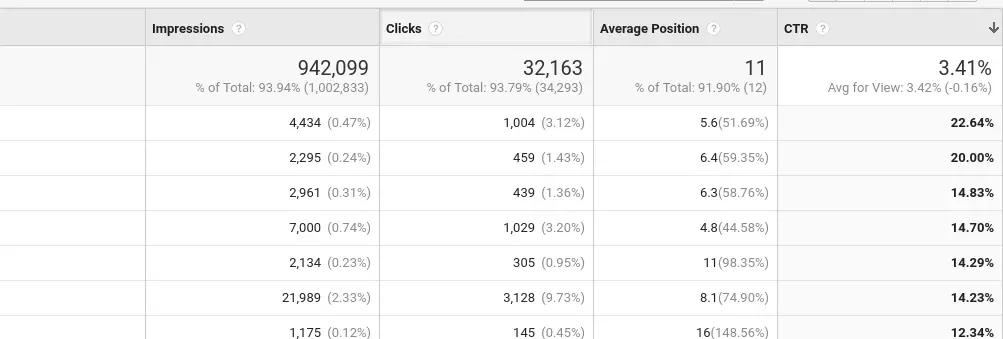seo: what is a good ctr for organic search
You wrote hundreds of blog posts, signed up and implemented a web analytics (eg. Google Analytics) service, and your posts are ranking somewhere in the google search result pages…and everything seems good. So, the next question is: Are you getting enough traffic from the search engines? Are you getting a good ctr (Click thru Rate) in search engines?
There are several research posts that have delved into how the position in the search engine results page co-relate with the click-thru rate (CTR). The higher the position on the page the more clicks you get. If you are in the top three, you can snag up to almost 80% of the traffic. So, it sounds like a good ctr is dependent on the position in SERP.
Unfortunately, we cannot all rank for in the top three…at least not for every single post or keyword. So that begs the question as to /*What a good CTR is for organic search is, */assuming that you are ranking somewhere in the first page.
Firstly, a good ctr is a relative or subjective term. What is good for one post may not be what is good for another. So, let's assume that anything better than an average is a decent and good value that we should target for.
Ok, let's get the trivialities out of the equation. The best and ideal CTR is 100%. sigh. Ideally you want all the users to click on the link. But, obviously that is probably not going to happen. The worst case scenario (and probably common) is obviously 0%. However it is all not that bad, at least you have got to the first page of the results page, that means you can start to optimize from here…quickly.
In the results page, there is usually 10 links that are organic search results. There will also be other varying amount of links that are paid, typically between 3 and 10. Google is now in the process of re-structuring their page which means the number of paid links could vary.
Now, not all positions on the search page are created equal. The top positions seem to get dis-proportionally more click than the bottom ones. But we have only so much control over where our link shows up. And also, this position changes over time and with each search query which means we only get an average position rather than the exact position of the link.

As you can see in the screenshot above, there is a page that ranks 11th in the search ranking and get 14.29% of the clicks, and another that ranks 4.8 and gets 14.70% of the clicks…..that is not a whole lot of difference in terms of percentage.
For the sake of simplicity and to give us a realistic target, let's assume that all positions get an equal proportion of clicks. That means the total clicks get divided up between 10 posts, so you should ideally get a 10% CTR (ie. 100/10) from the page. I consider this as my goal or target search CTR.
We have not taken into account the paid links in the page. Let's consider a average of about 5 ads per page. (not all search queries get the complete 10 ads, so it depends on the niche you are in). I have decided to split down the middle and assume an average of 5 ads per page per search query. So, that gives a total of 15 clickable links (10 organic and 5 paid) on the page.
Again, dividing it up equally between the links it gives us a CTR of 6.66% CTR (ie. 100/15). So, I would say the good ctr that you should target for is about 8% with 6.6% being the minimum and 10% being very good.
Also, remember that the user could click on multiple links with in the same search result page. It is not generally click one and done. So, this works to our advantage even if we are lower down in the page. And our assumption of equal division of clicks across a large sample size should more or less hold up.
Now that you have a target, find all the posts that are not currently meeting the target and you can try to optimize them further.
